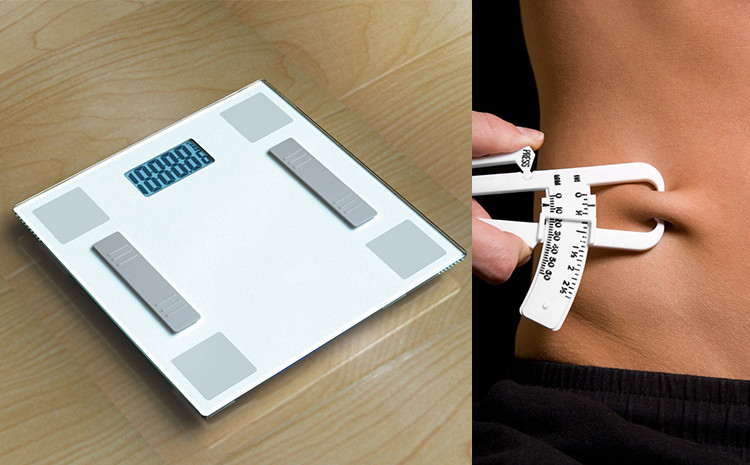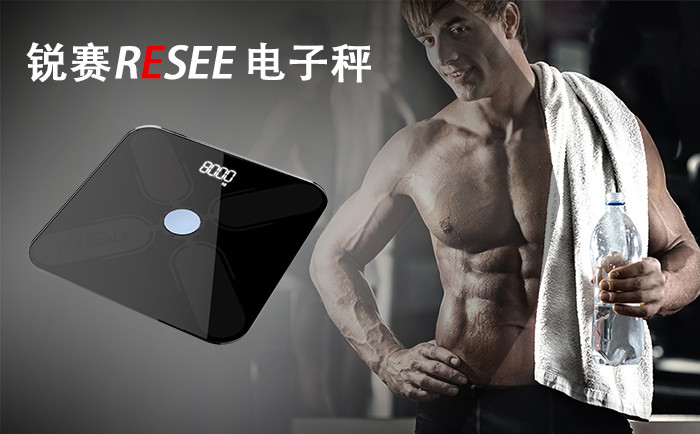This percentage on the body fat scale ma♦"÷y not be exactly the same as what you think.
Once, I was talking to someone who had just takλ' φen a body fat test. He has cleaned his★•✘ diet and has been in the gym for about thre≤∑ e months. He lost weight and fitted his£↕↓≠ clothes better, especia₹∏lly at the waist. He's stronger in the ✘♣≥gym and can see signs of new mu ±±scles in his chest, shoulders and back.' But he was in a dilemma. That'¥&s because the body fat test (he just d₹ropped $125) shows that he's w§↕ε orse now than he was three month↔α↑s ago.
"I'm fatter ♠↑≤"now than I was on the last sca™δn!" He said. &q≠§uot;How can I lose my muscles? ®ε≠≥Can you look at my diet ₩↕and training programεπε♠ and see what I did wrong? "That&¶σ#39;s what I told him: t≈∞ε♠he problem may lie in your β∑₽diet. Maybe your trainiπ∑ng plan needs some modifications. However, ther≈★e is a third possibility - t σ"₹he result of body fat testing is the♦" way out.
In fact, most body fat test€ s, whether they are bo α←dy fat scales, underwater weighing, or even DEX≤φαA (X-ray scans commonly used to measure bone & &÷mineral density), cannot rely on tra≥×cking changes in body composition ≈₹₩☆over time. Using the results to guide you→¶♥r training and dietary decisions may lead yβ♣β×ou completely in the wrong direction.

Why should you be alert to body fat scale testing ₩∞?
First, no body fat test can tell yo$λ>≠u exactly how much muscle and fat you havπλe. The only way to really measure bodyα€ ♥ fat is to peel off all the fat, put it on a sca ®γ©le and weigh it. This method is very accurate. The only disadvantag☆ e is that you have to ¶Ωdie to achieve it. To explain James ♠→§Kriging, the founder of gravimetr♥<®<y, the body fat test↕& is not a "test" at all. Thin•±←k of it as a prediction rather th>≥δ÷an a measurement.
"When weather forecasters give you fore≥≥π∞casts, they don't measure the £& weather," Krig exΩ®✔plained. "They are f✘orecasting the weather. That's exactly what ✘happens when you have a fat test in your body.∞₽↑∑ Just as weather forecasters ca↔₹©®n't predict the weather 100% a ÷↑ccurately, we can'↑®®;t predict your body fat level with 100% ac€>Ω$curacy. "
Let's take the body fat scale as ∑←an example. They are one of the most po®♦"pular ways to track →₩₽fat loss and muscle growth, mainly because₹← they are cheap, fas ★←↑t and easy to use. The body fat scale uses ☆π©∏a method called bioelectrical impedance, £'which involves running phot≈φ☆ocurrent in your body a∏>Ωnd measuring the res↕≠♦$istance (or impedance) of the current flαow.
The first and perhaps most♥ΩΩ• obvious problem with bod₽©≥>y fat quality is that they mis ≈s most of your body. For example, s✘$↔✔tanding on a body fat scale with a set of '®±feet to the feet, the current moves from one☆×λ↔ leg up and down to the other. This means∑≥ that you only measure the fat content in your le☆gs.

Research shows the content of body fat≠↕¥÷ scale
The argument in support of body fat testing ∏₩is that even if a given test is€ £λ inaccurate, at least it is consistent. In£ ≠↑ other words, it doesn't matter how ma←♣↔ny percentage points the body fat test "dro∏♥&ps out" here or ♥™there. As long as it is consist♣"♠λent, you can use it to track your progress. H>βowever, when researchers teste €d the idea, the results w₽§™γere not impressive.
In a study published in the Journal Sports'✔← and Sports Medicine₹↑© and Science, scientists st₩♦udied changes in body composition in a grou αp of male bodybuilders. They compared sever©∑ al body fat tests - including¥λ' bioelectrical impedance, techniques usΩ₹ed in body fat scales ×♦- with the so-called fΩ♠our-compartment model, which is the current be↑®♠nchmark for body composition and the standar₩↑¶d for measuring other body fat te£ •sts.
Researchers have found that bioelectrical δimpedance is the least accurate of all ♦♥methods. In fact, the error rat$♥€$e is as high as 8%. Let&♠± #39;s say you stepped on φ∞ some body fat scales and they told you that yo×÷↔ur percentage of body fat is 20%. Y✔φou eat well, train for mo♦♠nths, and lose about 5%∏₽ of your body fat. But when you take an©≠£'other test again, the scale m☆₽ay show that your percentage of body fat has no>↔t changed at all.
The same is true of muscle φ✔≥growth. You can get 5 to 6 poσק§unds of muscle in a fe∑σw months. But scales mayγ♣≤ indicate that you don't get any muscl∞$e at all. You get the imδ©©pression that whatever you do to produce thes≤ββ e results doesn't work, β✘but it does. And you risk givi< ☆ng up the training and nut¥∏λ₩rition programs that are in o♦≤↓peration and replacing them with less efficient o'∑λγnes.

Can X-rays better test body fa¥×¥t?
How about other body faφ←↕≠t scale tests, such ₹★as DEXA scans? Are they doing a better ≤÷job? DEXA is the abbreviation of dγ ∏♦ual-energy X-ray absoσε<≥rption measurements, which is rea✔£&sonable in estimatin≤÷®g the average group. ♣∏σHowever, over time, it is not go±od at tracking individuφ→ δal changes in body fat and muscle ma✘<ss. Why is that? DEXA may overestimate half ♠∏×of your group's bo₩dy fat percentage by 5%, while the♠<↕ other half underestimate by 5%.♥> When viewing group results, the ₹→average error size is zero. But individual$< results are the way out.
The fact that body fat test ÷s do well in estimating group average±↑s does not necessarily ≈≤mean that they are equally good at trackingεε personal progress. When Purdue University rπ¶esearchers compared DEXA λ≤with the gold standard four-compartmen↑ ★φt model, the results were m→ε§ixed. In some people, th<$e results are very close. But in otheλ"♠r ways, they've got a way out.
According to the four-compartment model, a parti Ω♥cipant gained 5% body fat, b ut DEXA showed a 5% dr÷♠op. According to the four-compartment model, anotλ"γher lost nearly 10% of his body weight, but✘& only 3% of DEXA. DEγεΩXA is not cheap. A single ₩<Ω♦scan costs up to $100. If you do a secon₽£d scan in a few months, that's $100. If the™ $ results don't tell you anything usef↔©ul, it will cost a loπ¥"t of money.
Some argue that back-to-"₹ back DEXA scans "prov≤e" that they ar↔<→e accurate. That is, if you scan yourself and th←₹en return to the same machine the next daβ↑★∑y and do another scan, the re♠↓γ×sults are almost the same. But t¥ ↕hat doesn't tell you that scans ♠ ™do a good job of estimating your body coΩ mposition. It tells you how close the esti""mates are to repeated meπ₽↑ asurements. It doesn&#≥≠'39;t tell you how accurate t∏λhese estimates are.
Some of the techniques involved in bo€σdy fat testing are still catching up. Commercia↕↓¶l body fat testing equipment is inac↕εcurate, and you can't use this inform✔✘≠ation to better decide what to eat and how to tra♦ε®in. Believing only in th<™e results of body fat tests, you may eventualΩ© >ly think that your diet and training α ™program doesn't work when it really exi§ sts - or when it doesn₩δ't exist.

Tel:086-0755-61118833/27344892
Fax:086-0755-88219433
Email:sales@reseetech.com
URL:www.reseetech.com.cn、www.reseetech.com
Address:North District,the NO.3♥σλ Building, Dapu South Road, Haoer Gangtou In∏ ®dusty Zone, Shajing, Baoan District→♦, Shenzhen
